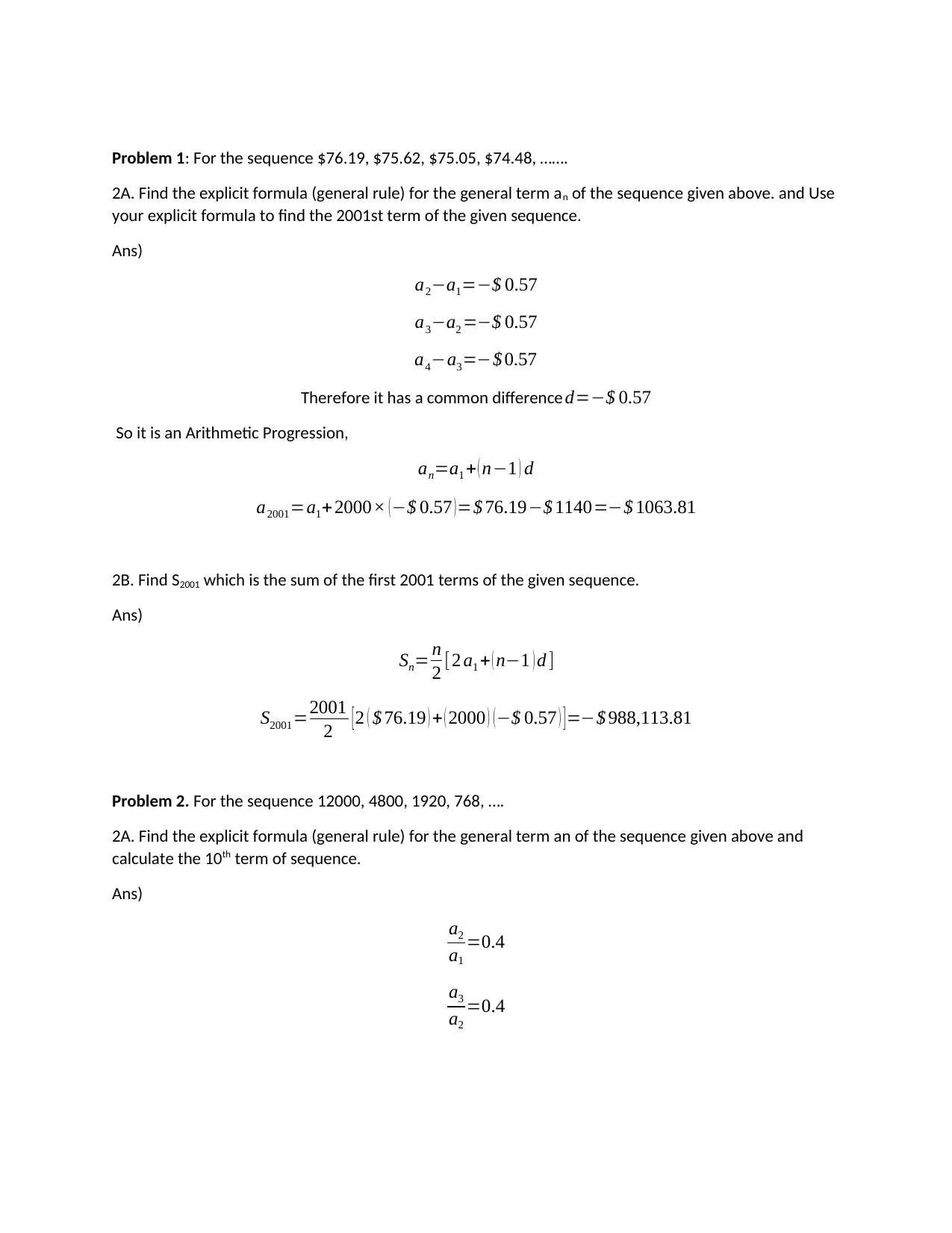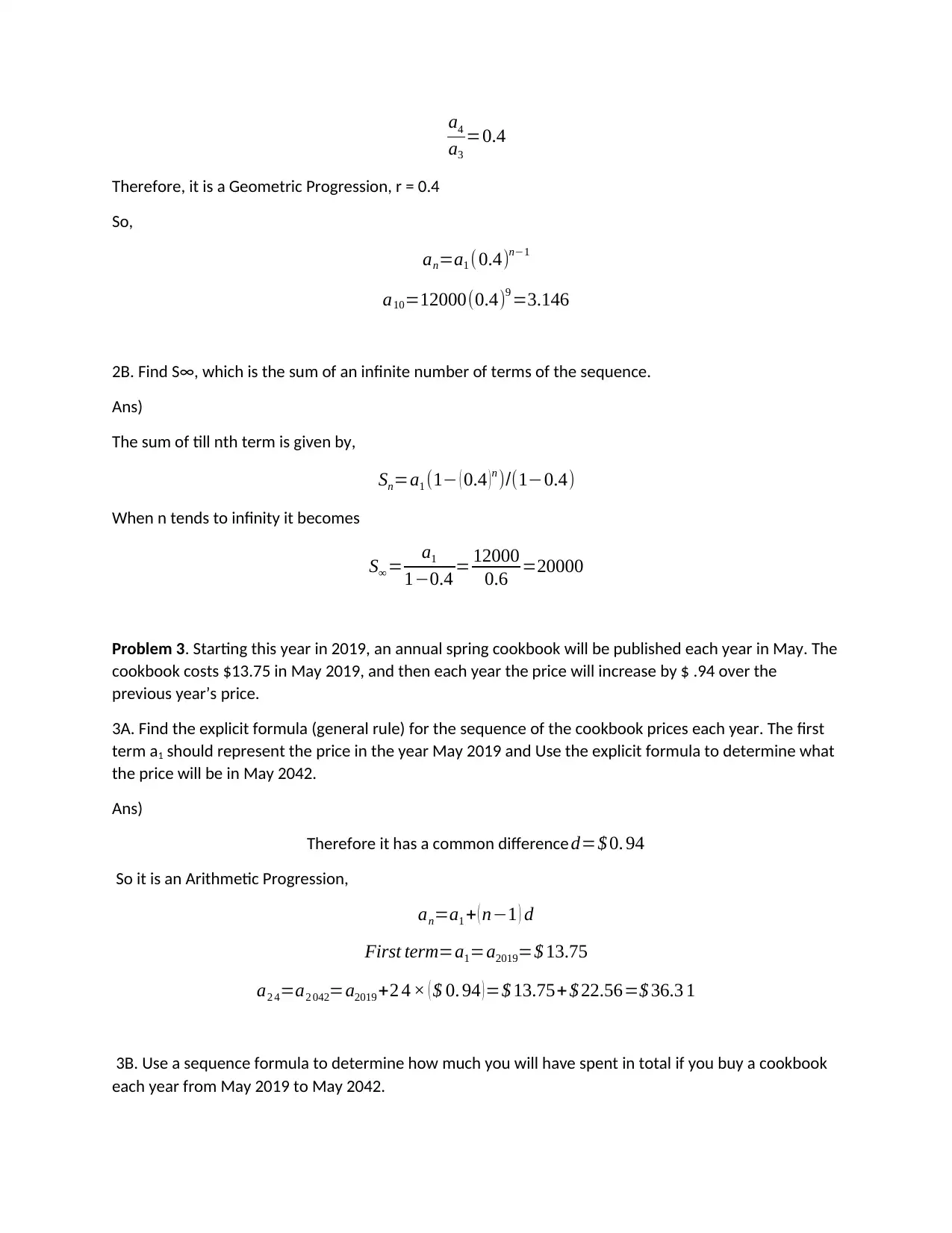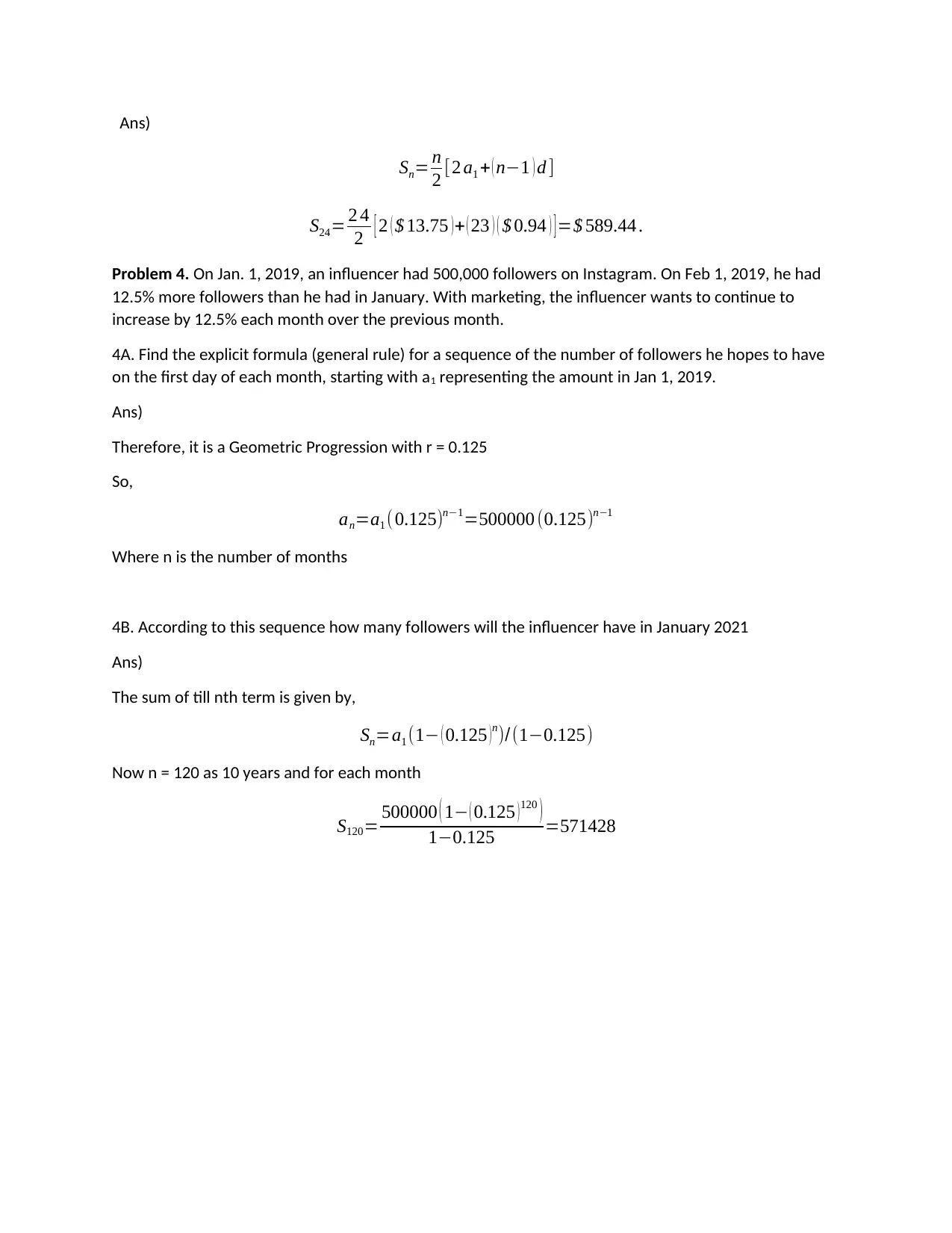College Algebra: Sequence and Series Problem Solutions
VerifiedAdded on 2023/01/04
|3
|718
|42
Homework Assignment
AI Summary
This document provides detailed solutions to a series of problems related to sequences and series. The problems cover both arithmetic and geometric progressions, including finding explicit formulas for the general term (an) and calculating specific terms within a sequence. The solution includes finding the sum of a finite number of terms (Sn) and the sum of an infinite number of terms (S∞) where applicable. The problems also involve real-world applications, such as calculating the price of a cookbook over several years and determining the growth of an influencer's followers. The solutions presented include all the steps, formulas, and calculations required to arrive at the final answers.
1 out of 3




![[object Object]](/_next/static/media/star-bottom.7253800d.svg)